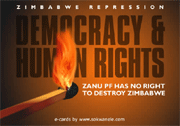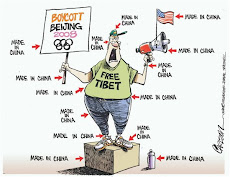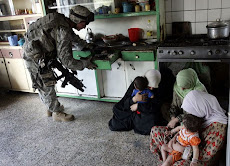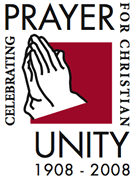
 Displaced residents who lost their homes in a powerful cyclone took shelter on Monday in a Buddhist temple. (Hla Hla Htay/Agence France-Presse — Getty Images)
Displaced residents who lost their homes in a powerful cyclone took shelter on Monday in a Buddhist temple. (Hla Hla Htay/Agence France-Presse — Getty Images)May 6th. (NY Times) - Myanmar struggled Monday to recover from a cyclone that killed more than 3,900 people and perhaps as many as 15,000. Foreign Minister Noppadol Pattama of Thailand met with Myanmar's ambassador on Tuesday, according to Reuters. After the meeting, Mr. Noppadol said that 15,000 people had been killed and another 30,000 were missing. If those numbers are accurate, the death toll would be the highest from a natural disaster in Asia since the tsunami of December 2004, which devastated coastlines in South Asia and claimed 181,000 lives. On Monday, three cabinet ministers told diplomats the death toll could reach 10,000 people in the delta region, an area that is home to nearly half of Myanmar’s 48 million people, according to Richard Horsey, a spokesman for the UN disaster response office in Bangkok. State radio reported that Saturday's vote on a draft constitution would be delayed until May 24 in 40 townships around Yangon and seven in the Irrawaddy delta, which bore the brunt of the killer storm, according to The Associated Press. It indicated that in other areas the balloting would proceed as scheduled. Tens of thousands of people were homeless after the cyclone, and food and water were running short. “Stories get worse by the hour,” one Yangon resident, who did not want to be identified for fear of government retribution, said in an e-mail message. “No drinking water in many areas, still no power. Houses completely disappeared. Refugees scavenging for food in poorer areas. Roofing, building supplies, tools — all are scarce and prices skyrocketing on everything.” Officials said they would open the doors of their closed and tightly controlled nation to international relief groups. So far, most foreigners and all foreign journalists have been barred from entering the country. They also said the referendum would proceed. “It’s only a few days left before the coming referendum and people are eager to cast their vote,” an official statement said Monday.
But witnesses and residents said the military had been slow to respond to the devastation of the cyclone, and some suggested that the government’s performance could affect the vote. Residents of the country, formerly known as Burma, said that they were being pressured to vote “yes” and that riot police officers had been patrolling the streets before the cyclone in a show of force that was more visible than their relief efforts afterward. Nine months ago, security forces had fired into crowds, killing dozens of people, to disperse huge pro-democracy demonstrations led by monks, and in the months since, the government has carried out a campaign of arrests and intimidation. State-owned television had reported early Monday that 3,934 people died in the cyclone, called Nargis, which swept through the Irrawaddy Delta and the country’s main city, Yangon, formerly Rangoon, early Saturday. The broadcast said nearly 3,000 were missing, all of them from a single town, Bogale. “What is clear,” Mr. Horsey said Monday, “is that we are dealing with a major emergency situation, and the priority needs now are shelter and clean drinking water.”
A spokesman for the World Food Program said the government of Myanmar, which severely restricts the movements and activities of foreign groups, had given the United Nations permission to send in emergency aid. At the United Nations, Secretary General Ban Ki-moon said he had mobilized a disaster assessment team to determine Myanmar’s most urgent needs. A human rights group based in Thailand, the Assistance Association for Political Prisoners (Burma), which has provided reliable information from Myanmar in the past, said soldiers and police officers had killed 36 prisoners in Insein prison to quell a riot that started after the cyclone tore roof sheets off cell blocks, Reuters reported. The report could not be independently confirmed. The junta that rules Myanmar has closed the country off from the outside world and maintained its grip on power through force, while its economic mismanagement has driven the country deeper into poverty. Some government-run enterprises or businesses with links to the government have already required their employees to vote in advance. Exile groups said some residents had told them they were angry about the weak response of the military, which had seemed strong enough when the task was to crack down on citizens. “This is what people I have contacted complain about,” said Aung Zaw, editor of the magazine Irrawaddy, based in Thailand. “These people were so active in September killing the monks, but where are they now?”
Residents of Yangon complained that the government had failed to adequately warn them of the approaching storm. “The government misled people,” Thin Thin, a grocery store owner, told The Associated Press. “They could have warned us about the severity of the coming cyclone so we could be better prepared.” On Sunday, the government’s initial estimate was that the cyclone had killed 351 people. Estimates of the toll soared on Monday, and on Tuesday the state-run Myanmar TV, monitored by Reuters from outside the country, reported that the cyclone had killed about 10,000 people in Bogale alone. The basis of the figure was not clear. In Washington, the first lady, Laura Bush, took Myanmar’s government to task on Monday for failing to notify its citizens in time, and pressed the military junta to accept American aid. “Although they were aware of the threat, Burma’s state-run media failed to issue a timely warning to citizens in the storm’s path,” Mrs. Bush said in a rare news conference at the White House. “It’s troubling that many of the Burmese people learned of this impending disaster only when foreign outlets, such as Radio Free Asia and Voice of America, sounded the alarm.” Asked whether she was concerned that American aid might not reach Burma’s people, Mrs. Bush said, “I’m worried that they won’t even accept U.S. aid.”
The American Embassy in Myanmar has authorized the release of $250,000 in immediate emergency aid, and Mrs. Bush promised, “More aid will be forthcoming.” The immediate problem in affected areas now is survival, with water and electricity cut off, roads blocked by fallen trees, roofs torn off homes and prices for transportation and food rising quickly. “People are starving,” an unidentified resident was quoted as saying by the Democratic Voice of Burma, a dissident radio station based in Norway. Mr. Horsey, of the United Nations, said teams representing various aid groups were trying to assess the damage. Some aid had already been stockpiled in anticipation of natural disasters, he said. “It will take a few days until a complete and accurate picture of the impact and of the numbers of people affected comes out,” he said. Even without the destruction from the cyclone, travel and communications can be difficult in the country because of its weak infrastructure, said David Mathieson, an expert on Myanmar with Human Rights Watch, a private organization. In Yangon, he said, people usually get only five or six hours of electricity a day, and some remote areas have no access to electricity. “So the fact that electricity is down is not really that important,” he said. Jens Orback, a former minister for integration and democracy in Sweden, was in Yangon when the cyclone hit. “Trees that were standing there hundreds of years fell easily,” he said, “and things from roofs fell down and the electricity went down and there were only flashlights. In the first day, you couldn’t go anywhere by car. No telephones worked. The Internet was out, and there was a lack of information. “What struck us also,” he continued, “was that in the first daylight, nobody from the police, military or firemen was out working with the devastation, but people privately were there with knives and machetes and hand saws.
by SETH MYDANS
+++++++++++++++++++++++++++++++++++++++++++++++++++
Disclaimer
No responsibility or liability shall attach itself to either myself or to the blogspot ‘Mozlink’ for any or all of the articles/images placed here. The placing of an article does not necessarily imply that I agree or accept the contents of the article as being necessarily factual in theology, dogma or otherwise.
Mozlink























































